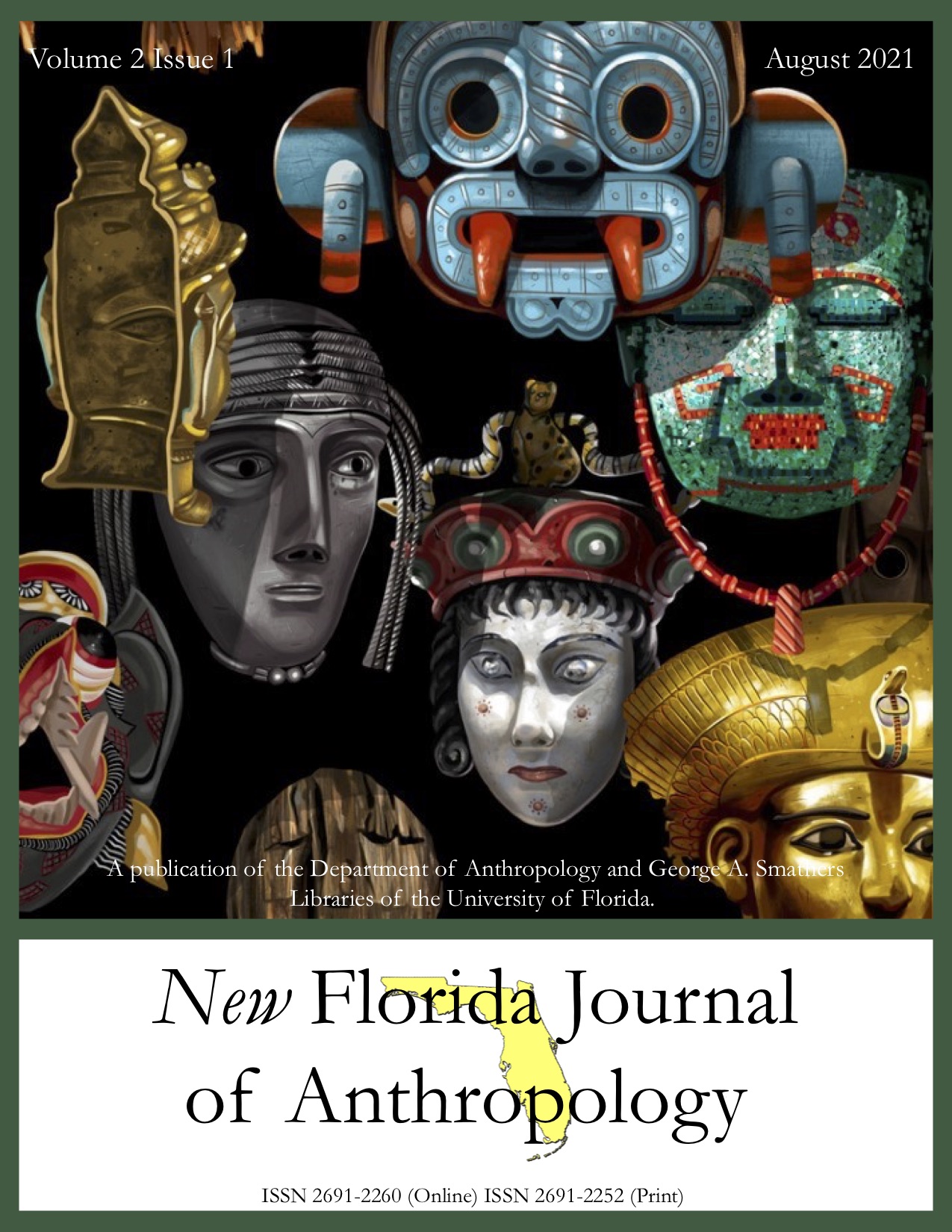The Charity Hall Mission: An 1820s Boarding School for Native American Children in the Chickasaw Nation
DOI:
https://doi.org/10.32473/nfja.v2i1.128786Keywords:
dining, diet, landscape, missionscape, missionaries, choctawAbstract
This study focuses primarily on the historical and archaeological investigations of Charity Hall, a Christian mission school that operated within the Chickasaw Nation in northeastern Mississippi between 1820 and 1830. This school and others during this time were funded by the United States government through the 1819 Civilization Fund Act, so I argue that these stations served as outposts for American colonialism before the federal government shifted its Indian policy to one of removal. Additionally, I argue that it is impossible to adequately understand the operation of individual mission schools apart from their networks, which I theorize here as “missionscapes.” The historic component also, therefore, focuses on a broader missionscape that encompassed both the Chickasaw Nation and the neighboring Choctaw Nation during the 1820s and 1830s. More precisely, the historical and archaeological data marshalled here are presented to answer my primary research question: what material tools and practices did missionaries use to “civilize” Native American children and their families prior to Indian removal?
One of the chief ways that Chickasaw and Choctaw children were being “civilized” by the missionaries at Charity Hall was through the use of material culture. Their lives were regimented around an alien work schedule, they were clothed in materials procured by charitable societies, and they sat around a dinner table with ceramic and metal implements produced in faraway places, some coming all the way from east Asia. The pastors used practical mastery of both educational and mechanical “arts” to civilize the children in accordance with the wishes of the United States government. Here processes of practice and materiality took on a colonial character due to their being encouraged and enforced in a context where the balance of power was shifting from the Indians to the Americans. The American elites found the Christian missionaries to be ready-made agents to “civilize” Indians and spread political influence internally within both the Chickasaw Nation and the Choctaw Nation. The mission experience, however, ultimately proved to be too costly and slow and therefore paved the way for the removal policies of the 1830s and the abandonment of the “civilization” project altogether.
Downloads
Published
Issue
Section
License
By submitting to the New Florida Journal of Anthropology, the author(s) agree to the terms of the Author Agreement. All authors retain copyrights associated with their article contributions and agree to make such contributions available under a CC BY-NC 4.0 license upon publication.
Florida OJ Author Agreement (University of Florida)
The following agreement takes effect upon acceptance of the Submission (“Submission”) for publication in the New Florida Journal of Anthropology:
I hereby grant to the University of Florida (“the University”) the non-exclusive right to retain, reproduce and distribute the Submission in whole or in part, in print and electronic format and in any medium. This agreement does not represent a transfer of copyright to the University.
The University may make and keep multiple copies of the work for purposes of security, backup, preservation and access; and may migrate the work to any medium or format for the purpose of preservation and access.
I represent and warrant to the University that the work is my original work and that I have the authority as sole author or I have the authority on behalf of my co-authors to grant the rights contained in this agreement. I also represent that the work does not, to the best of my knowledge, infringe or violate any rights of others.
I further represent and warrant that I have obtained all necessary rights to permit the University to reproduce and distribute the work, including any third-party material. Alternatively, I represent that my use of any third-party material is allowed because the material is not in copyright or I have performed a fair use analysis and reasonably believe my use is permitted. Any content owned by a third party is clearly identified and acknowledged within the work.
I grant these same rights to New Florida Journal of Anthropology. Additionally, I grant the right to both the University and New Florida Journal of Anthropology to enter into agreements with third-party entities and the rights necessary to host, print, index and abstract the Submission.
Open Access and Self-Archiving
The New Florida Journal of Anthropology follows an open-access publishing model, meaning that all articles will be publicly accessible on the Internet immediately upon publication.Authors may share the submitted manuscript (preprint) of the Submission on the Internet at any point before or after publication, with a citation and link to the final version of record to be added as soon as the issue is available. The author may disseminate the final peer-reviewed version at any point after publication.
Creative Commons License
The New Florida Journal of Anthropology applies a Creative Commons CC BY-NC 4.0 license to encourage sharing and reuse of content and to maximize the impact of published research. By publishing in the New Florida Journal of Anthropology, authors agree that the terms of this license will be applied to the Submission. The George A. Smathers Libraries at the University of Florida (copyright@uflib.ufl.edu) may be able to offer additional information.
By granting this license, authors acknowledge that they have read and agreed to the terms of this agreement.


